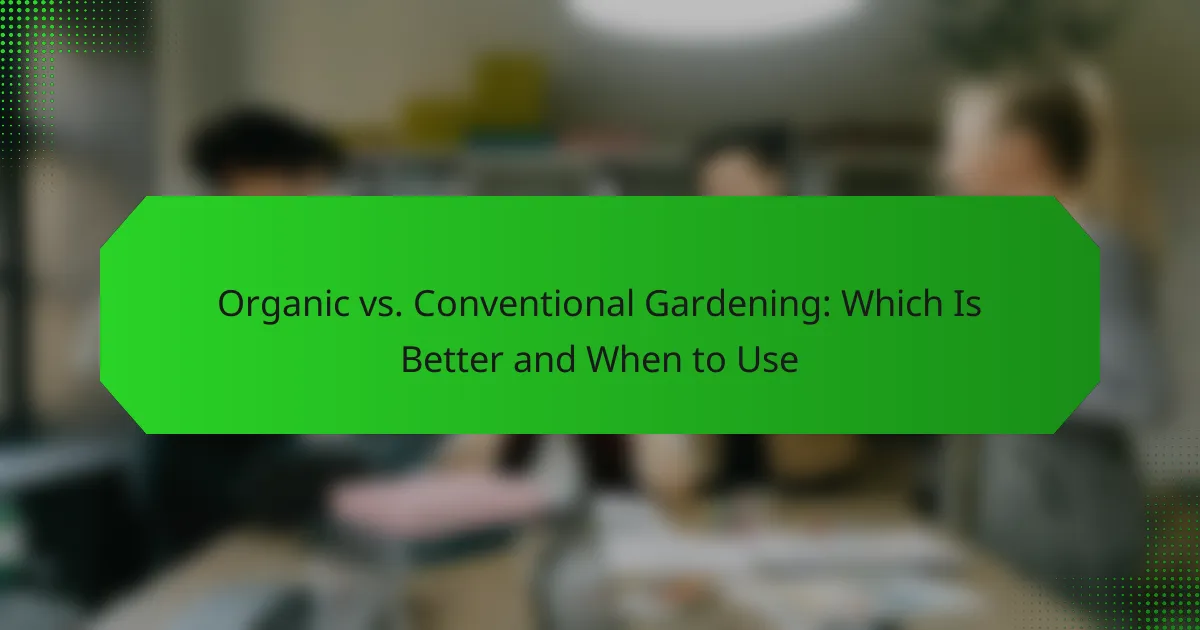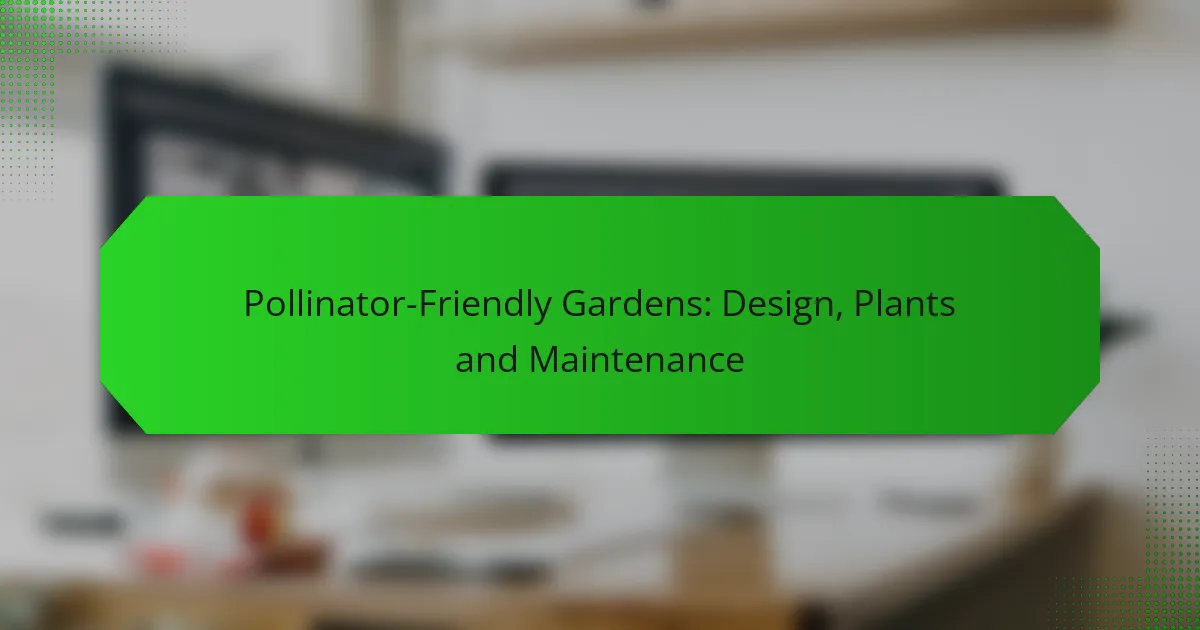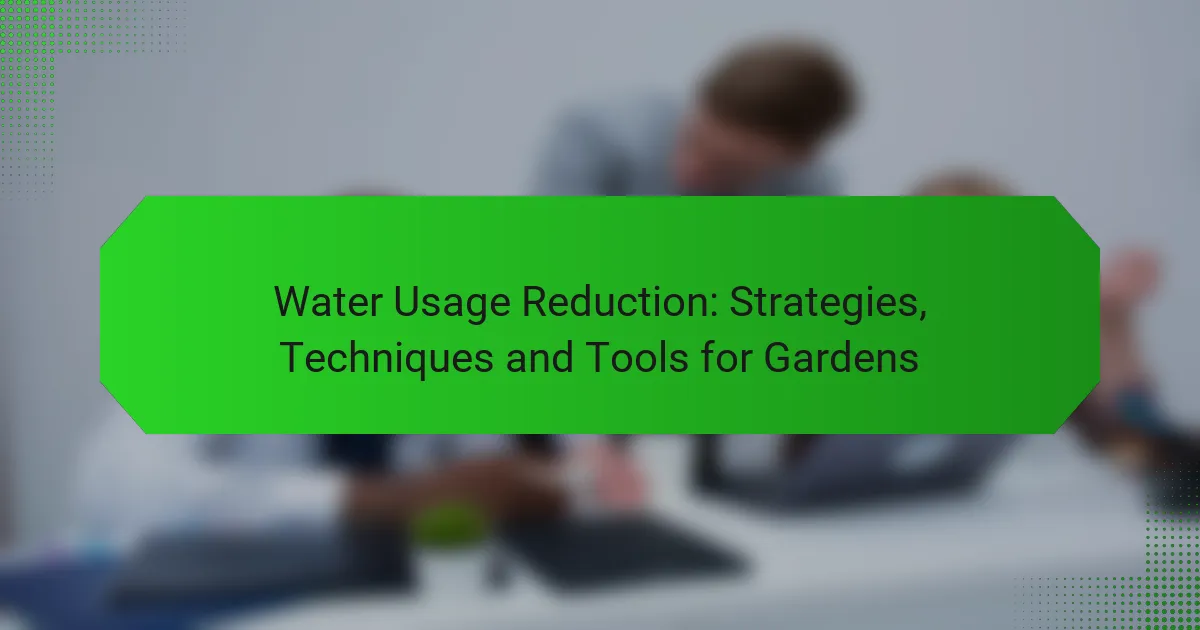When deciding between organic and conventional gardening, it’s essential to consider the specific context and goals of your gardening efforts. Organic gardening promotes environmental health and food quality, making it a great choice for those prioritizing sustainability. In contrast, conventional gardening can offer higher yields and efficiency, particularly in suburban settings, appealing to those focused on maximizing productivity.
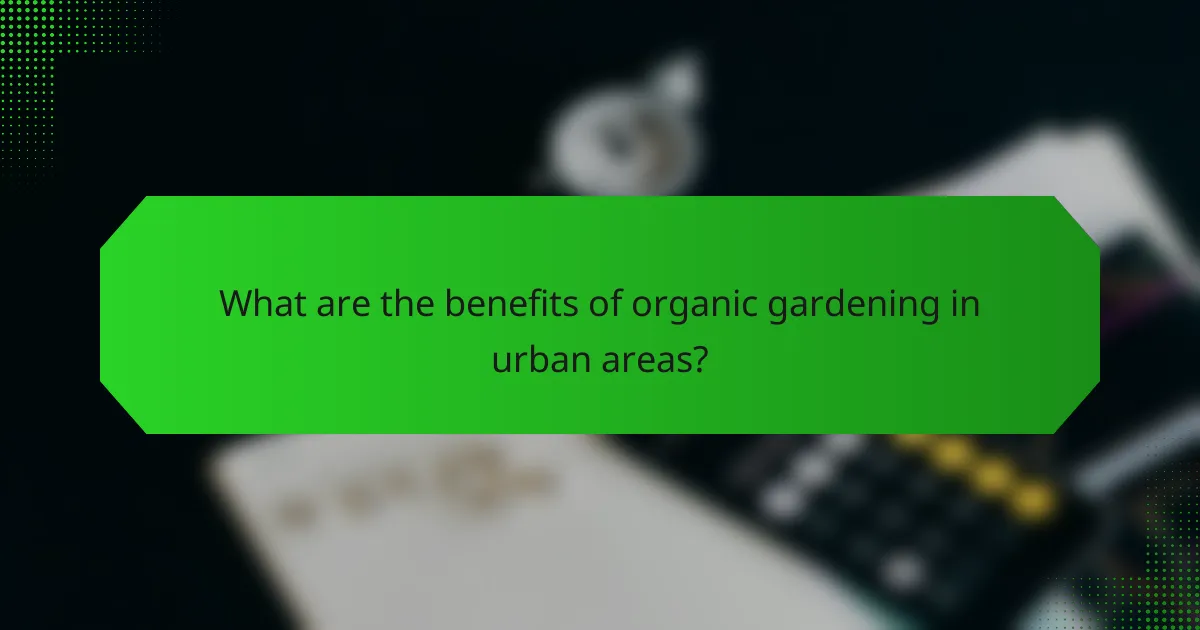
What are the benefits of organic gardening in urban areas?
Organic gardening in urban areas offers several advantages, including improved environmental health and enhanced food quality. By avoiding synthetic chemicals, urban gardeners can create safer, more sustainable spaces that benefit both people and local ecosystems.
Improved soil health
Organic gardening practices, such as composting and crop rotation, significantly enhance soil health. These methods increase soil fertility, structure, and moisture retention, leading to more robust plant growth. Urban gardeners can use kitchen scraps and yard waste to create nutrient-rich compost, which can be easily incorporated into small garden plots.
Additionally, organic gardening encourages the presence of beneficial microorganisms and earthworms, which further enrich the soil. This natural approach helps maintain a balanced ecosystem, reducing the need for chemical fertilizers.
Reduced chemical exposure
One of the primary benefits of organic gardening is the reduction of chemical exposure for both gardeners and consumers. By avoiding synthetic pesticides and fertilizers, urban gardeners can minimize health risks associated with these substances. This is particularly important in densely populated areas where air and water quality may already be compromised.
Choosing organic methods not only protects the gardener but also ensures that the produce is free from harmful residues. This can be especially appealing to families with children or individuals with sensitivities to chemicals.
Enhanced biodiversity
Organic gardening promotes biodiversity by creating habitats for various species, including pollinators, beneficial insects, and microorganisms. Urban gardens can serve as vital green spaces that support local wildlife, contributing to a healthier ecosystem. Planting a diverse range of species can attract pollinators like bees and butterflies, which are essential for food production.
Moreover, incorporating native plants into urban gardens can help restore local ecosystems and provide food sources for native wildlife. This approach not only enhances the beauty of urban spaces but also fosters a greater connection between residents and their natural environment.
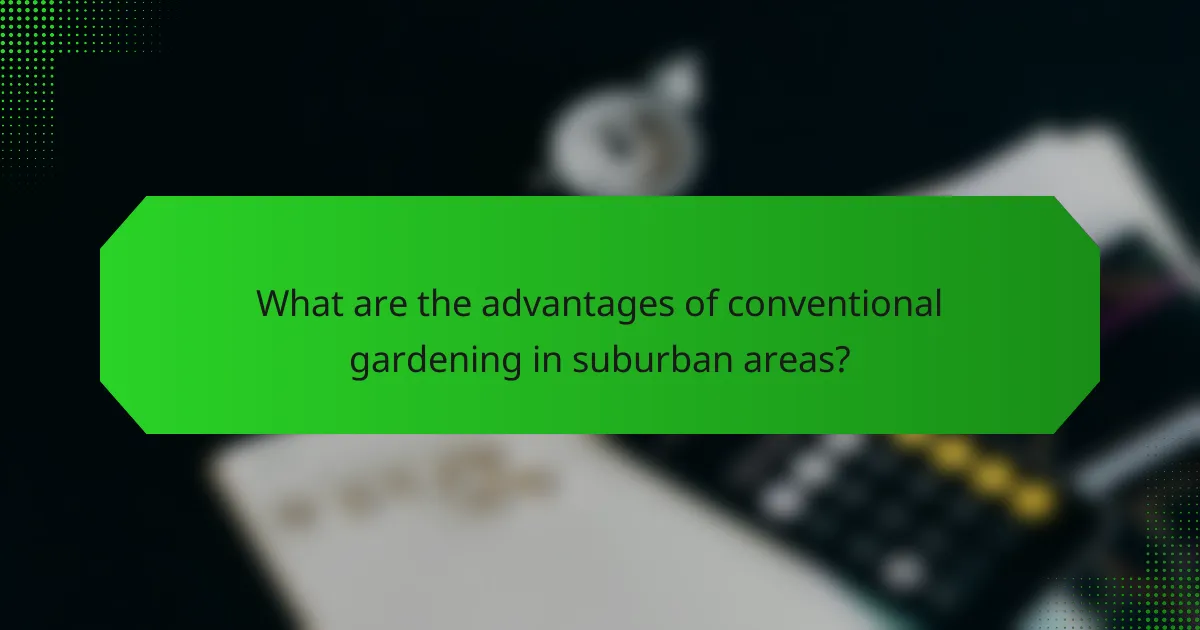
What are the advantages of conventional gardening in suburban areas?
Conventional gardening offers several advantages in suburban areas, particularly in terms of efficiency and productivity. It often yields higher quantities of produce in shorter timeframes, making it a practical choice for gardeners looking to maximize their output.
Higher crop yields
One of the primary benefits of conventional gardening is the potential for higher crop yields. By utilizing synthetic fertilizers and pesticides, gardeners can significantly enhance plant growth and fruit production. For instance, conventional methods can increase yields by 20-50% compared to organic practices, especially for staple crops like tomatoes and corn.
Suburban gardeners can take advantage of this by selecting high-yield varieties and employing techniques such as crop rotation and intercropping to further boost productivity. This is particularly beneficial for families looking to grow their own food efficiently.
Faster growth rates
Conventional gardening typically results in faster growth rates for plants. The use of chemical fertilizers provides essential nutrients directly to the plants, promoting quicker development. For example, many vegetables can be ready for harvest in just a few weeks when grown conventionally, compared to several months with organic methods.
This rapid growth allows suburban gardeners to enjoy multiple harvests within a single growing season, maximizing the use of their garden space. It’s essential, however, to monitor growth closely to prevent over-fertilization, which can lead to nutrient imbalances.
Cost-effective pest control
Conventional gardening often employs cost-effective pest control methods that can be more efficient than organic alternatives. Synthetic pesticides can quickly eliminate pests and diseases, reducing the risk of crop loss. This is particularly important in suburban areas where pests can proliferate due to proximity to other gardens and green spaces.
Gardeners should consider integrated pest management (IPM) strategies that combine chemical controls with cultural practices to minimize environmental impact while maintaining effectiveness. Regular monitoring and timely application of treatments can help ensure a healthy garden without excessive costs.

When should you choose organic gardening?
Choosing organic gardening is ideal when health, environmental impact, and market demand are top priorities. Organic methods focus on natural processes, avoiding synthetic chemicals, which can benefit both personal health and the ecosystem.
For health-conscious consumers
Health-conscious consumers often prefer organic gardening due to its emphasis on natural growing practices. Organic produce typically contains fewer pesticide residues and is grown without synthetic fertilizers, making it a safer choice for families and individuals concerned about chemical exposure.
Additionally, organic gardening promotes soil health and biodiversity, which can lead to more nutrient-rich crops. This approach can be particularly appealing for those looking to enhance their overall well-being through diet.
In environmentally sensitive regions
In environmentally sensitive regions, organic gardening is a more sustainable option. It helps protect local ecosystems by minimizing chemical runoff and promoting soil health, which can prevent erosion and maintain water quality.
Regions facing issues like soil degradation or water scarcity can benefit from organic practices, as they often use less water and improve soil structure over time. Implementing organic methods can contribute to long-term environmental resilience.
When growing for local markets
Growing for local markets often favors organic gardening due to increasing consumer demand for organic products. Many local buyers are willing to pay a premium for organic produce, which can enhance profitability for small-scale farmers.
Additionally, organic certification can open up new market opportunities, as many local farmers’ markets and grocery stores prioritize organic offerings. Understanding local regulations and certification processes is essential for those looking to enter this market successfully.

When is conventional gardening the better option?
Conventional gardening is often the better choice when immediate results are needed, especially in large-scale agricultural settings or areas facing significant pest pressures. It employs synthetic fertilizers and pesticides that can enhance growth and protect crops more effectively in certain situations.
For large-scale agriculture
In large-scale agriculture, conventional gardening typically outperforms organic methods due to its ability to produce higher yields more quickly. Farmers often rely on chemical fertilizers and pesticides to ensure that crops grow efficiently and are protected from pests, which can be crucial for meeting market demands.
Additionally, conventional practices allow for the use of monoculture, which simplifies planting and harvesting processes. This can lead to economies of scale, making it more cost-effective for large operations.
In areas with pest pressures
Conventional gardening is particularly beneficial in regions where pest pressures are high. The use of synthetic pesticides can provide immediate and effective control over infestations, reducing the risk of crop loss.
Farmers facing severe pest challenges may find that organic methods, which rely on natural pest control, are not sufficient. In such cases, the swift action provided by conventional pesticides can be essential for maintaining crop health and productivity.
When immediate results are needed
When immediate results are necessary, conventional gardening is often the preferred method. The application of synthetic fertilizers can significantly accelerate plant growth, allowing for quicker harvests.
This approach is particularly useful for farmers who need to respond to market demands or seasonal changes. For example, crops grown with conventional methods can often be ready for harvest weeks earlier than those grown organically, providing a competitive edge.
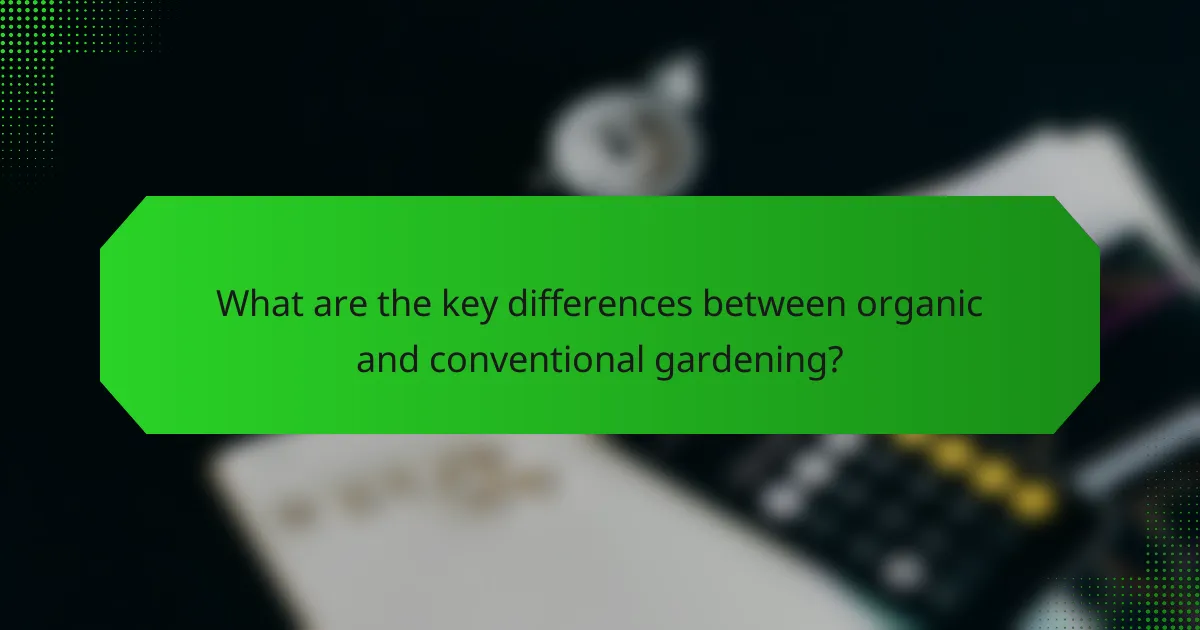
What are the key differences between organic and conventional gardening?
Organic gardening focuses on using natural methods and materials, while conventional gardening often relies on synthetic chemicals and fertilizers. Understanding these differences can help gardeners choose the best approach for their needs and goals.
Fertilizer types
In organic gardening, fertilizers are derived from natural sources such as compost, manure, and bone meal. These organic fertilizers improve soil health and provide nutrients over time, promoting a sustainable ecosystem.
Conversely, conventional gardening typically utilizes synthetic fertilizers, which deliver nutrients quickly but can lead to soil degradation and water pollution if overused. Gardeners should consider the long-term effects of their fertilizer choices on soil and plant health.
Pesticide usage
Organic gardening employs natural pest control methods, such as beneficial insects, crop rotation, and organic-approved pesticides. These methods aim to minimize harm to the environment and maintain biodiversity.
In contrast, conventional gardening often uses synthetic pesticides that can be effective in controlling pests but may pose risks to non-target species and human health. Understanding the implications of pesticide use is crucial for making informed gardening decisions.
Soil management practices
Organic gardening emphasizes practices that enhance soil structure and fertility, such as cover cropping, mulching, and reduced tillage. These methods help retain moisture and improve nutrient cycling, leading to healthier plants.
On the other hand, conventional gardening may involve more intensive tillage and the use of chemical soil amendments. While these practices can yield quick results, they may compromise soil health over time. Gardeners should weigh the benefits and drawbacks of their soil management strategies to ensure sustainable growth.
